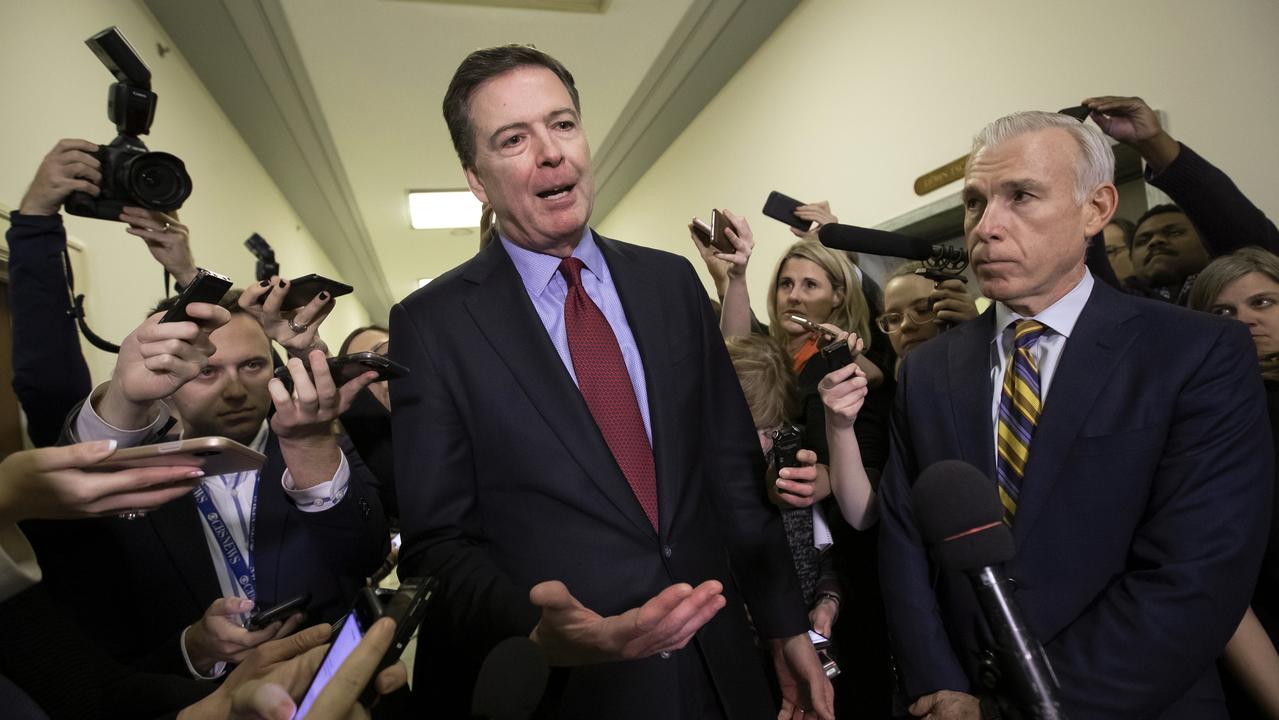Dumping our heritage
THE seemingly insatiable demands of the resources boom have focused the world's gaze on the Great Barrier Reef.

WHEN a World Heritage mission visits Gladstone Harbour this week to investigate the threats posed to the Great Barrier Reef by Australia's resource export boom, they can expect clearer waters than usual.
The giant cutter-suction dredger that has been sucking away the sea floor to make way for Queensland's $70 billion export gas industry on Curtis Island has been idle for a fortnight.
The dredger, Al Mahaar, stopped working on February 20 when the ladder winch that lowers the cutter head into the water failed. The Gladstone Ports Corporation says it has been dismantled for repairs and will be out of action until later this month, possibly after the state election and after the UNESCO delegation has gone home.
Today, only the backhoe dredgers are working, scooping out spoils from the harbour bottom that can be taken out to sea to be dumped.
It has been a frustrating few months for Gladstone Harbour authorities, who have faced a series of dredging shutdowns due to high turbidity over the new year period; this follows widespread concerns over an unexplained explosion in numbers of diseased and dead fish.
It was the development of the Curtis Island liquefied natural gas precinct that first raised the alarm of World Heritage officials.
At its June meeting, the World Heritage Committee criticised Australia for not keeping it properly informed about development plans in the World Heritage area and the potential impact of further resource developments. But Gladstone is only the beginning.
Development plans along the Queensland coast, mostly for coal, will see a five-fold increase in shipping through the Great Barrier Reef, to more than 10,000 ships a year by 2020.
To get the coal to sea, massive port expansions are planned at Hay Point near Mackay, already one of the world's largest coal ports. Hay Point is expected to increase capacity from 88 million tonnes a year to 340 million tonnes by 2020.
Even bigger is Abbot Point, near Bowen, where coal shipments are expected to grow from 15 million tonnes last year to 385 million tonnes by 2020 as the giant Galilee Basin coal region is brought to life.
Development of the smaller Laura Basin coal precinct, north of Cooktown, will help lift the state's coal export capacity from 156 million tonnes last year to almost a billion tonnes by 2020.
Environmental group Greenpeace claims this is enough to fill a coal train and wrap it four and a half times around the planet.
To enable a five-fold increase in shipping -- which poses its own threat to the reef and marine life -- it will be necessary to dredge harbours to greatly expand capacity of the coal port terminals.
In the lead-up to the World Heritage visit, a fight has erupted over what to do with the dredging spoils, estimated at more than 100 million cu m.
Federal government plans to impose a dumping fee of between $5 and $15 a cu m for dredge spoils in the Great Barrier Reef Marine Park area have enraged conservationists, who do not want the waste dumped in the sanctuary, and companies, who simply do not want to pay.
The Gladstone expansion will remove 25 million tonnes of spoils, 20 million of which will be used for land reclamation, with five million dumped into the sea about 40km from the start of the reef. The expansion is not putting its dredging waste into the Great Barrier Reef Marine Park, but it is dumping it into the World Heritage area.
The port corporation's chief executive, Leo Zussino, says the solution is to change the World Heritage boundaries to match those of the Marine Park. "The problem that you have is when they drew up the Great Barrier Reef World Heritage area in 1981 it went to the low-water mark along 2000km of Queensland coast, so it included every port facility above Bundaberg.
"All the wharves we had in 1981 were put into the World Heritage area.
"If the World Heritage designation was to protect the values in the GBR, then align the boundaries with the GBR Marine Park," Zussino says.
"The GBR Marine Park been put in place with a lot more science than the World Heritage."
The issue goes well beyond the immediate port surrounds, however. After years spent regulating onshore development to stop agricultural run-off and silting of the inner reef, the Great Barrier Reef faces the prospect of being deliberately inundated with enough dredge material to fill the Melbourne Cricket Ground 67 times.
Over the next two weeks, Tim Badman, director of the International Union for Conservation of Nature World Heritage Program, and Fanny Douvere, co-ordinator of the UNESCO World Heritage Centre's Marine Program, will investigate. Their mission has identified five key objectives:
• To assess and make conclusions on the state of conservation of the property as a whole, including key issues that have the potential to significantly impact on the area;
• Visit key development areas, including Curtis Island, as well as elsewhere along the Great Barrier Reef coast, with the aim to assess their impacts;
• Review planned and potential developments and assist Australia to prepare a long-term plan for their sustainable development;
• Contribute to a Strategic Environmental Assessment process;
• Ensure that Australia keeps the World Heritage Committee properly informed.
If nothing else, the committee's concerns have finally forced the government to consider the cumulative impact of resource development along the Queensland coast on our most treasured environmental asset.
This month, the federal and Queensland governments jointly announced they would undertake a comprehensive strategic assessment of the GBR World Heritage area and adjacent coastal zone.
The review is to enable a "big picture" approach to environment and heritage protection. It will determine where sustainable development can go, the type of development that will be allowed, and the conditions under which development may proceed.
The assessment will also investigate the adequacy of existing management arrangements.
The federal government-funded Great Barrier Reef Marine Park Authority will lead the marine component and look at the arrangements in place to manage and protect the park and the World Heritage area.
The Queensland government will lead the coastal component of the review. It will consider planning for urban, industrial and port development and the processes and management arrangements that will be put in place to ensure "development occurs sustainably and does not impact unacceptably on matters of national environmental significance". Given the scale of the proposals it is a big ask.
The dredging plans have infuriated other marine park users.
Sunfish Queensland's executive director Judy Lynne says that for many years, her members have been told the integrity of the reef depends on a "clean" water environment. "We have been prepared to work with the Marine Park Authority and the state to maintain this principle, often sacrificing the existing rights of our members," Lynne says. "We find this proposal to be environmental vandalism, sanctioned by the federal government for a few pieces of silver in a 'pay to pollute' scheme."
Lynne says if dredge spoil is allowed to be dumped in the GBR marine environment it could be carried for 100km or more in average weather conditions, and might be continually "stirred up" any time there is a rough sea.
"It betrays the trust that Australians have in the authority and the federal government to protect a world recognised icon which is not only a marine park and World Heritage area but designated one of the natural wonders of the world," Lynne says.
The Marine Park Authority's general manager, Andrew Skeat, says dumping of dredge material in the park would be considered only as a last option.
"A proponent must demonstrate all alternative options have been fully explored," he says. "For example, options of re-use or disposal on land."
And all proposals would be subject to a rigorous environmental impact permit assessment process.
But environment groups claim it is simply not possible to properly measure the potential impact.
For Zussino, meeting the resource demands of a transforming world is simply Queensland's destiny. "The greatest economic prize to Queensland is not the gas industry," says Zussino.
"It is the metallurgical coal industry, the stuff that is used to make steel."
Queensland controls 55 per cent of the world's traded metallurgical coal. The industry here has significant advantages over its competitors in high-cost North America and poorly serviced Mozambique and Indonesia.
"You have two countries, China and India, where more than 600 million people are going to be urbanised over the next 20 years and they need steel," Zussino says. "China has gone from 60 million tonnes of steel in 1990 to 700 million tonnes this year.
"India will go from 60 million tonnes this year to 200 million tonnes a year in the next decade and it is looking to Australia for the coal to do it.
"This is going to go on for three decades," Zussino says. "We will be the Qatar of the Pacific."
Just what this means for the Great Barrier Reef remains uncertain.
The commonwealth and Queensland governments have told the World Heritage mission they remain committed to ensuring the reef is passed on to future generations with the values that saw it declared a World Heritage area intact, and that it will continue to be one of the best-known marine protected areas in the world.
For the Great Barrier Reef this is not the first or only scare, and Australia's greatest natural asset has arguably proved to be more resilient than many have predicted.
But there is a limit.
The UNESCO mission will report next month on whether it considers the reef to be "in danger". The environmental communities of the world will be watching very closely.


